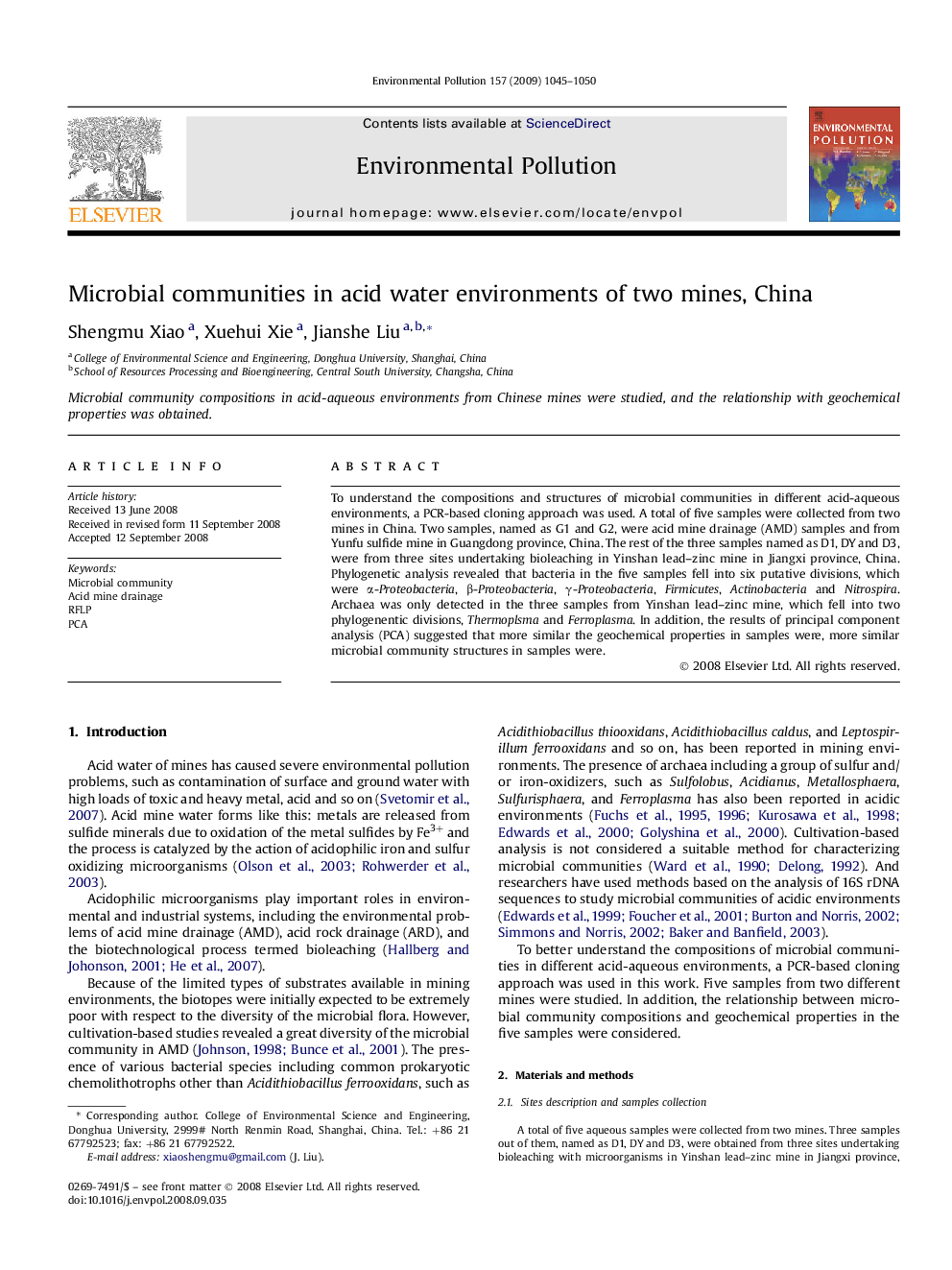| کد مقاله | کد نشریه | سال انتشار | مقاله انگلیسی | نسخه تمام متن |
|---|---|---|---|---|
| 4426620 | 1309130 | 2009 | 6 صفحه PDF | دانلود رایگان |

To understand the compositions and structures of microbial communities in different acid-aqueous environments, a PCR-based cloning approach was used. A total of five samples were collected from two mines in China. Two samples, named as G1 and G2, were acid mine drainage (AMD) samples and from Yunfu sulfide mine in Guangdong province, China. The rest of the three samples named as D1, DY and D3, were from three sites undertaking bioleaching in Yinshan lead–zinc mine in Jiangxi province, China. Phylogenetic analysis revealed that bacteria in the five samples fell into six putative divisions, which were α-Proteobacteria, β-Proteobacteria, γ-Proteobacteria, Firmicutes, Actinobacteria and Nitrospira. Archaea was only detected in the three samples from Yinshan lead–zinc mine, which fell into two phylogenentic divisions, Thermoplsma and Ferroplasma. In addition, the results of principal component analysis (PCA) suggested that more similar the geochemical properties in samples were, more similar microbial community structures in samples were.
Journal: Environmental Pollution - Volume 157, Issue 3, March 2009, Pages 1045–1050